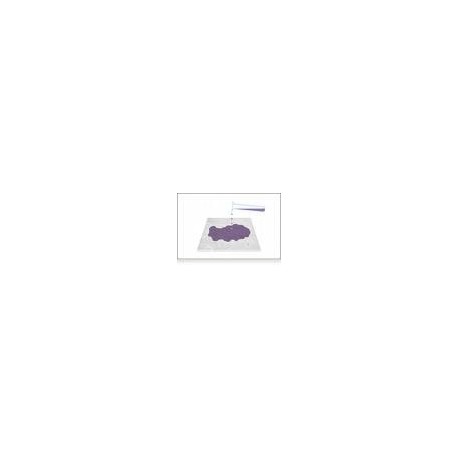Contact us
Your Cart
0 Product Products
0 Product Products
No products
TBD
Shipping
$0.00
Total
Product successfully added to your shopping cart
Quantity
Total
There are 0 items in your cart.
There is 1 item in your cart.
Total products
Total shipping
TBD
Total
PERMANGANATE STAINING TEST
 View larger
View larger
New product
When used to evaluate the cure of a UV coating, the PERMANGANATE STAINING TEST will provide a qualitative benchmark for similar production jobs. By applying the test solution to a UV-cured surface, a stain will result. The color intensity of the resulting stain will vary according to cure level. This color intensity is used for calibrating the performance of identical coatings which have been cured with various dosages of UV radiation.
How it works:
1. A 1% solution of potassium permanganate is the standard and is prepared by diluting in deionized or distilled water.
As sold, the dilution ratio is already sufficiently reduced to use straight out of the bottle, and can be further reduced to as much as 1:1 with deionized or distilled water for many applications. Some initial testing may be required to determine the stain density that works best for your application.
2. Apply a sufficient quantity of this solution to a UV-cured coating to cover an area approximately 1/2 inch square. (The area covered is not critical, although a larger area will allow for an easier reading of stain intensity).
3. Allow the solution to remain in contact with the film for five minutes. Rinse with water.
4. In the area where the solution was in contact with the coating, a brown stain will be apparent. The intensity of the stain is proportional to the quantity of residual unsaturation in the coating.
This test is qualitative only. To provide meaningful results, the test should be calibrated on the same coating which has been cured with various exposure
times to UV radiation. This calibration will provide stained specimens with varying color intensity for use as comparison samples for future runs of this coating. Residence time of the KMNO4 solution on the film is important. To produce more accurate results, establish a preset length of testing.
How it works:
1. A 1% solution of potassium permanganate is the standard and is prepared by diluting in deionized or distilled water.
As sold, the dilution ratio is already sufficiently reduced to use straight out of the bottle, and can be further reduced to as much as 1:1 with deionized or distilled water for many applications. Some initial testing may be required to determine the stain density that works best for your application.
2. Apply a sufficient quantity of this solution to a UV-cured coating to cover an area approximately 1/2 inch square. (The area covered is not critical, although a larger area will allow for an easier reading of stain intensity).
3. Allow the solution to remain in contact with the film for five minutes. Rinse with water.
4. In the area where the solution was in contact with the coating, a brown stain will be apparent. The intensity of the stain is proportional to the quantity of residual unsaturation in the coating.
This test is qualitative only. To provide meaningful results, the test should be calibrated on the same coating which has been cured with various exposure
times to UV radiation. This calibration will provide stained specimens with varying color intensity for use as comparison samples for future runs of this coating. Residence time of the KMNO4 solution on the film is important. To produce more accurate results, establish a preset length of testing.

Download MSDS:
SDS-Permanganate Stain-2015-GHS.pdf
1229 W. Cortland St. · Chicago, IL 60614-4805 · Phone: 1-800-621-1296 OR 773-248-0099 · Fax: 1-800-99FAXUV OR +1-773-880-6647· Email: info@uvps.com
© COPYRIGHT 2019 U V Process Supply, Inc.






